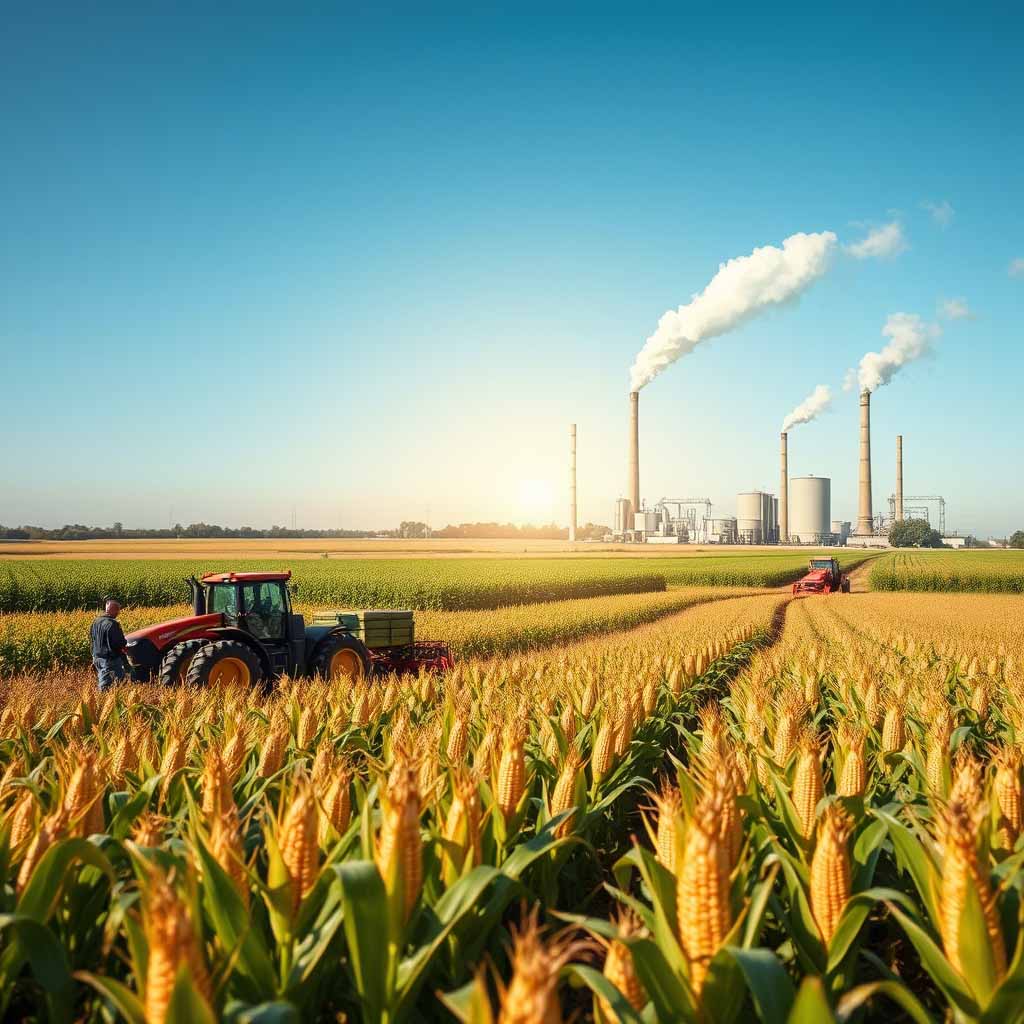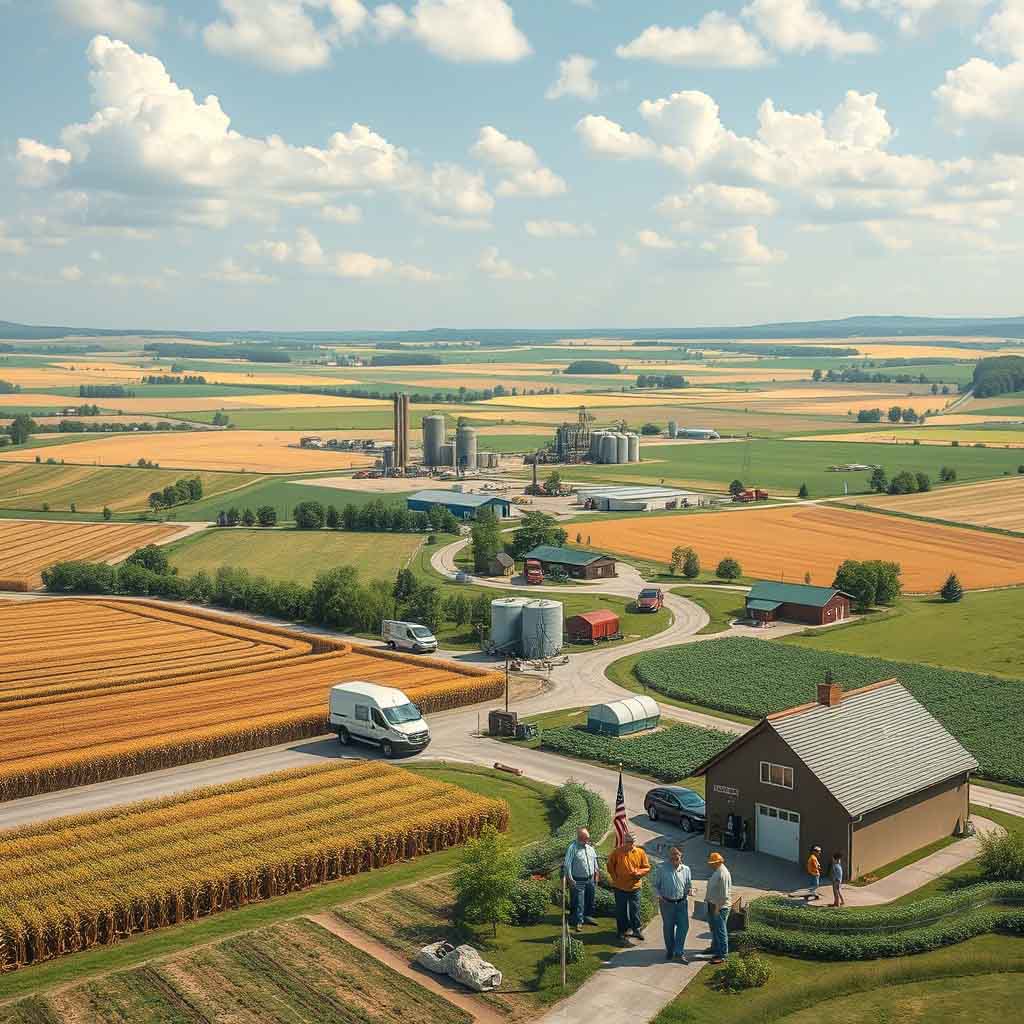Ethanol in the Future of Middle-America is more than just a fuel—it’s a game-changer for energy independence and economic growth. As the demand for renewable energy sources rises, ethanol is emerging as a key player in sustaining Middle-America’s agricultural and industrial sectors. This biofuel, primarily derived from corn, not only supports local farmers but also reduces reliance on fossil fuels, lowering carbon emissions. With advancements in production technology and increasing government incentives, ethanol’s role in the region’s energy landscape is set to expand. Exploring its potential reveals a promising future where sustainability, economic prosperity, and energy security go hand in hand. Middle-America is poised to lead this renewable revolution.
Click to use Silverigroup personal shopper services
The Role of Ethanol in the Future of Middle-America
Ethanol in the Future of Middle-America is poised to be a crucial driver of economic growth and energy sustainability. As one of the largest producers of ethanol, this region benefits from its abundant corn supply, which serves as a primary raw material for biofuel production. Ethanol not only provides a renewable alternative to fossil fuels but also supports thousands of jobs in agriculture and manufacturing.
With increasing global demand for cleaner energy, ethanol is expected to play a key role in reducing carbon emissions and promoting energy independence. Government incentives and advancements in ethanol production technology will further enhance its efficiency and competitiveness. However, challenges such as infrastructure limitations and competition from electric vehicles must be addressed. As Middle-America adapts to evolving energy trends, ethanol remains a promising solution for a more sustainable and economically resilient future.
Click to buy citric acid from Silvairgroup
Agricultural Impact of Ethanol Production
Ethanol production has significantly transformed the agricultural landscape, particularly in Middle-America, where corn-based ethanol dominates the biofuel industry. Farmers benefit from a steady demand for corn, leading to increased crop prices and economic stability in rural areas. This industry supports thousands of jobs, from farming to ethanol refining and distribution.
However, large-scale ethanol production also presents challenges. Increased corn demand can lead to higher food prices and strain water resources due to intensive irrigation. Soil degradation and the need for sustainable farming practices are growing concerns.
Click to buy Beluga Fresh Frozen from Silverigroup
To address these challenges, advancements in agricultural technology, such as precision farming and crop rotation, are being implemented to optimize yields while preserving environmental health. Additionally, research into alternative ethanol sources, such as switchgrass and agricultural waste, aims to reduce dependence on corn. Despite challenges, ethanol remains a vital component of agricultural sustainability and economic growth in ethanol-producing regions.

Environmental Benefits of Ethanol in Middle-America
Ethanol production in Middle-America offers significant environmental advantages, particularly in reducing carbon emissions and decreasing reliance on fossil fuels. As a renewable biofuel, ethanol burns cleaner than gasoline, emitting fewer greenhouse gases and helping mitigate climate change. Its use in fuel blends, such as E10 and E85, contributes to improved air quality by reducing harmful pollutants like carbon monoxide and particulate matter.
Beyond emissions reduction, ethanol supports sustainable land use practices. Many farmers implement crop rotation and conservation techniques to maintain soil health while producing corn for ethanol. Additionally, advancements in cellulosic ethanol—derived from agricultural waste and non-food crops—further enhance sustainability by utilizing byproducts rather than dedicating new farmland for fuel production.
| Benefit | Description |
|---|---|
| Lower Carbon Emissions | Reduces greenhouse gases compared to gasoline |
| Improved Air Quality | Decreases pollutants like carbon monoxide |
| Renewable Resource | Derived from corn and agricultural waste |
| Sustainable Farming | Encourages crop rotation and soil conservation |
| Efficient Water Use | Modern plants use less water in production |
| Energy Independence | Reduces reliance on imported fossil fuels |
Water and energy efficiency improvements in ethanol refineries also contribute to a lower environmental footprint. Modern ethanol plants use less water and rely more on renewable energy sources, making the production process increasingly eco-friendly. However, continuous innovation is needed to balance ethanol expansion with environmental conservation. By integrating sustainable farming, refining, and distribution practices, ethanol can remain a key component of Middle-America’s transition to a cleaner and greener energy future.
Challenges Facing Ethanol in Middle-America’s Energy Market
Despite its benefits, ethanol faces several challenges in Middle-America’s evolving energy landscape. From infrastructure limitations to increasing competition with electric vehicles (EVs) and other renewables, ethanol’s future depends on addressing these hurdles effectively.
Infrastructure Limitations and Distribution Issues
One of the main challenges ethanol faces is the lack of widespread infrastructure for storage, blending, and distribution. Unlike traditional gasoline, ethanol requires specialized handling and storage due to its higher affinity for water and potential to corrode pipelines. Key issues include:
- Limited Ethanol-Compatible Fuel Stations – Many rural areas still lack sufficient fueling stations that offer high-ethanol blends like E85. Expanding infrastructure is costly and slow-moving;
- Transportation Challenges – Ethanol cannot be transported through existing crude oil pipelines, requiring trucks, rail, or barges, which increases costs and logistical complexity;
- Blending Restrictions – Ethanol blends above 10% (E10) face regulatory hurdles and resistance from the petroleum industry, limiting higher ethanol adoption.
These distribution barriers make it difficult for ethanol to expand its market share and reach more consumers, especially in regions dominated by traditional gasoline infrastructure.
Competition with Electric Vehicles and Other Renewables
The rise of electric vehicles (EVs) presents another significant challenge to ethanol’s role in Middle-America’s energy market. As automakers shift towards electrification and governments introduce incentives for EV adoption, biofuels like ethanol risk becoming less relevant. Key factors driving this shift include:
- Government Policies and Incentives – Federal and state incentives for EVs, such as tax credits and charging infrastructure investments, encourage consumers to transition away from liquid fuels;
- Lower Operating Costs of EVs – Electric vehicles have fewer maintenance requirements and lower fuel costs compared to ethanol-powered cars, making them increasingly attractive to consumers;
- Renewable Energy Growth – Wind and solar energy expansion further reduces reliance on ethanol by providing cleaner alternatives for electricity generation.
While ethanol still holds an important place in the fuel industry, especially in rural and agricultural communities, addressing these challenges is crucial. Investing in ethanol-compatible infrastructure, exploring advanced biofuels, and integrating ethanol with hybrid technologies could help secure its role in Middle-America’s energy future.


